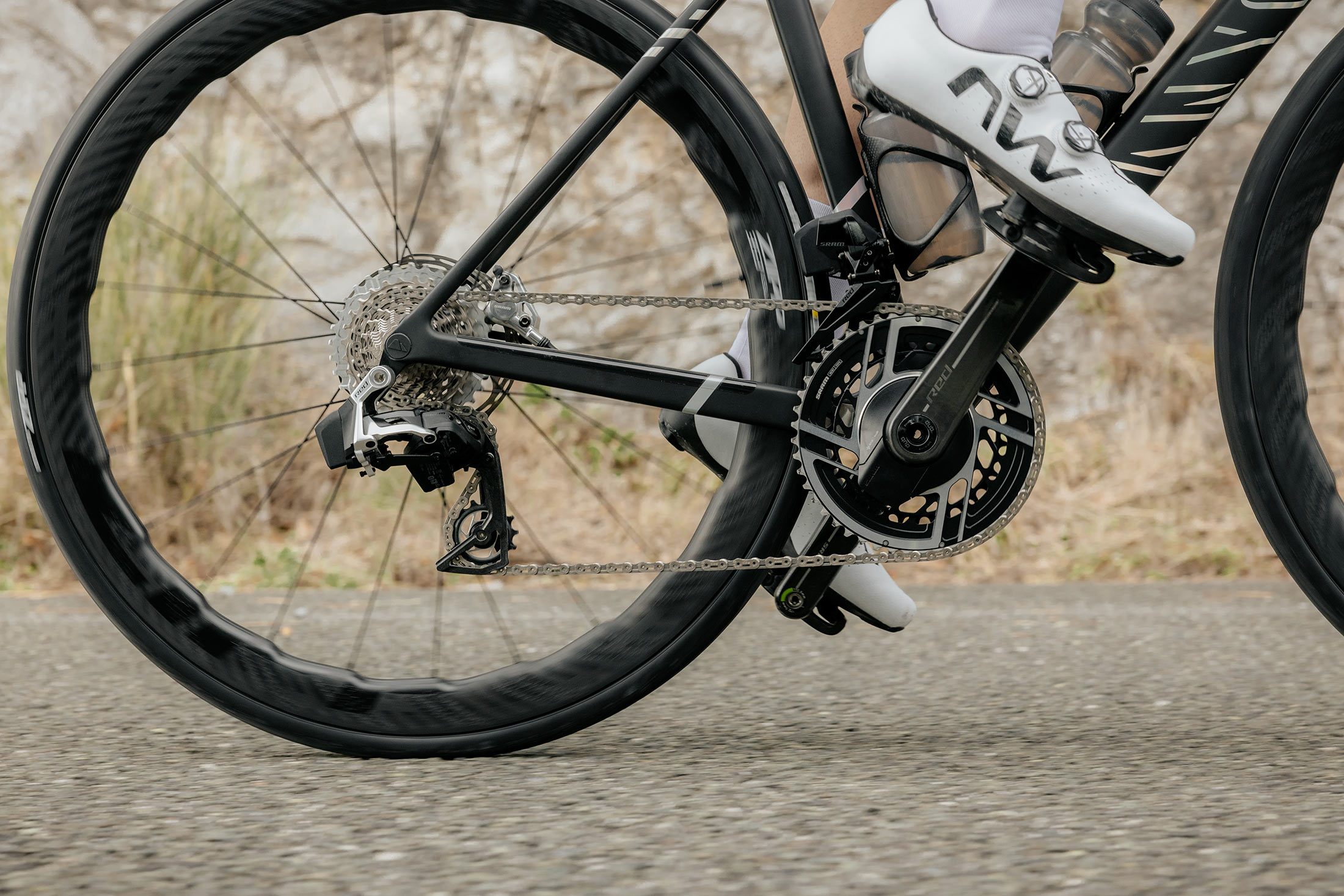When the first edition of RED eTap AXS launched, it introduced SRAM’s new gear ratio philosophy, which trickled across all of their road bike groups as those were updated to 12 speeds, from Force to Rival and even down to Apex.
Some of those groups introduced new features of their own, with Rivals’s updated hood shapes eventually trickling up to Force. Along the way, their drop bar groups also branched off into gravel with XPLR variants.
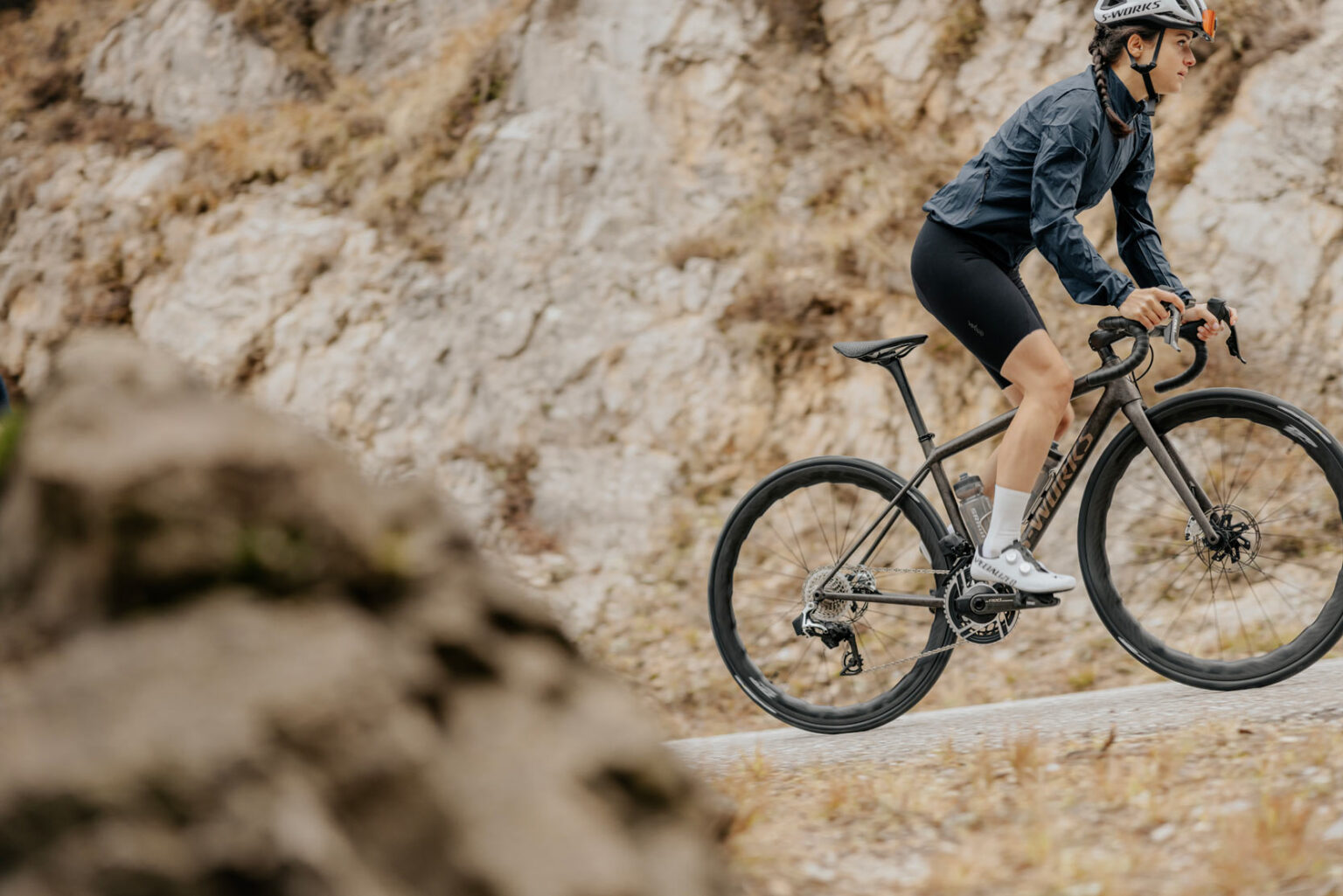
With the new RED AXS, they took all of the feedback from those other groups, their top Pro Tour riders, and current RED riders, then boiled it down into a newer, simpler, and faster RED group that sits at the very top of the category. To do that, they chased two goals:
- Make it simpler to use
- Make it lighter
In the process, they also gave it the best drop bar brake levers ever. Here’s how it all comes together…
KISS: Keep It Simple, SRAM
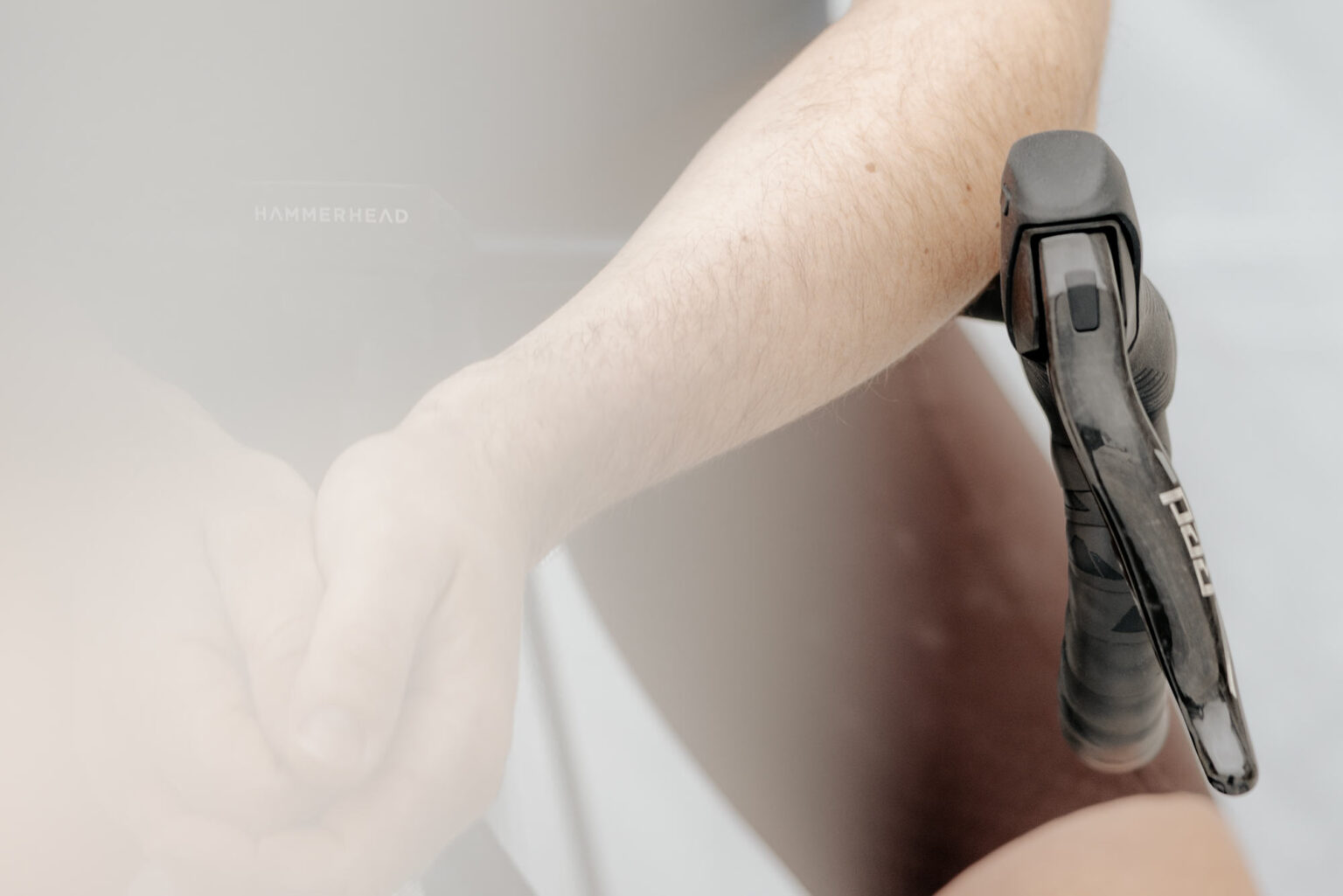
Chances are you’ll buy a bike with the new SRAM on it and won’t have to pair anything other than your computer and the AXS App. But as someone who’s installed quite a few SRAM AXS groups over the years, I appreciate that they’ve made the DIY installation easier. And some of that translates to what you’ll see as an end consumer buying a complete bike, too, so bear with me.
Initial setup is quicker
SRAM says they wanted to make setup effortless. From shifting to pairing to updating with the app, the group should require only your performance as an input. If you’re installing from scratch, you’ll still need to pair the rear derailleur to the front derailleur and shifters before connecting them with the AXS app (here’s how). But then once you pair the group with the app, everything seems shows up more quickly and all together in the app.
Easier gearing options & backward compatibility
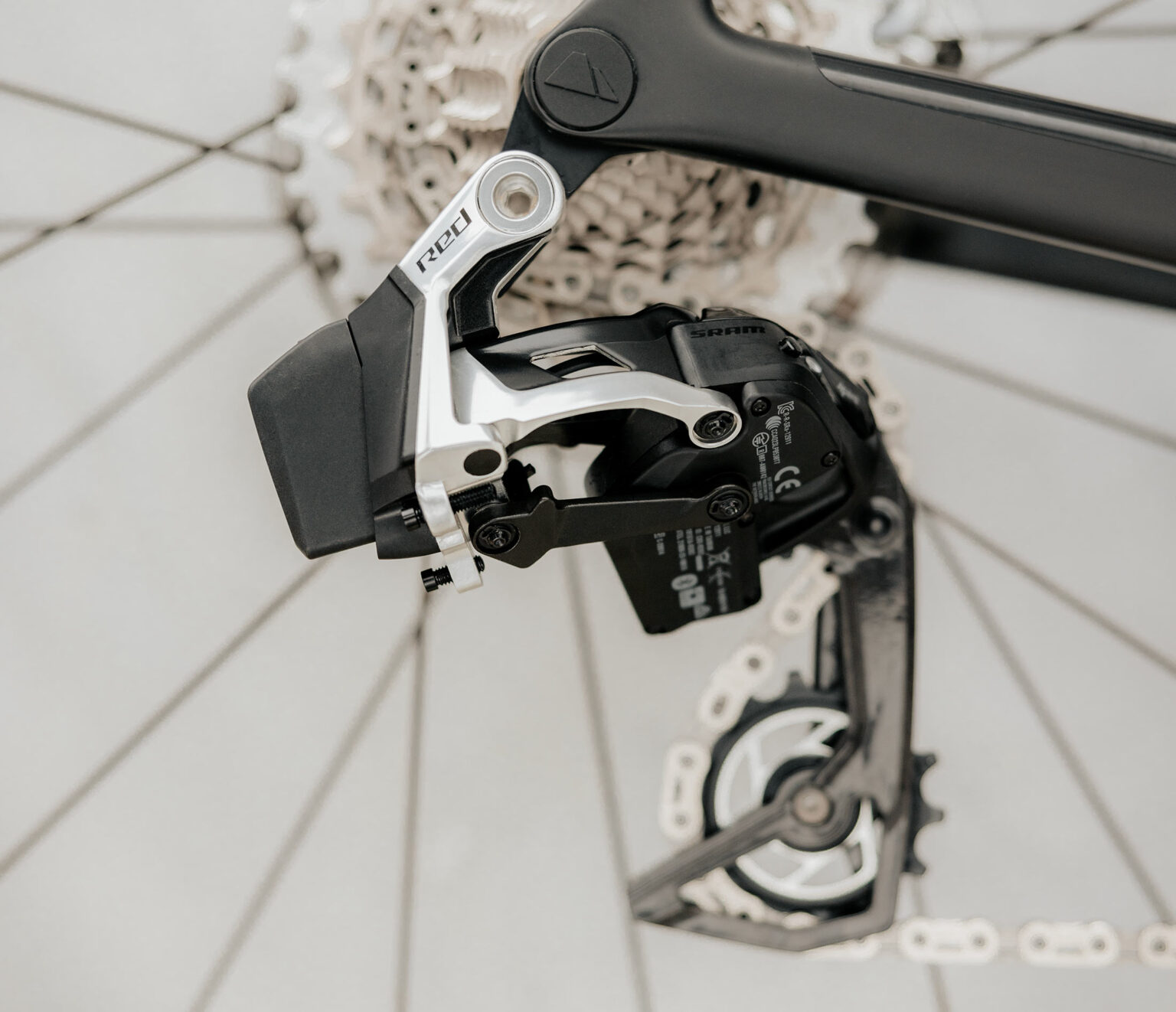
SRAM knows that Bikes have gotten faster, gearing has gotten wider, and rider expectations higher. So, the new RED makes ownership simpler and easier, too, while delivering all the modern options.
First, there’s no “Wide” derailleur variant (yet…?). One front derailleur and one rear derailleur handles all gearing combinations, so you can mix and match chainring combos and cassettes however you like without worrying about whether the derailleurs can handle it.

To do that, they lose the 10-26 cassette that no one was buying anyway, and offer four options. Choose from 10-28, 10-30, 10-33, and 10-36 cassettes. Both the 10-33 and 10-36 are new for RED level groups..
Second, everything here is backward compatible with all 12-speed AXS groups currently on the market, from Apex up to RED. Which is good, because you may only want to upgrade to the new brake levers & brakes after reading this, eventually replacing the drivetrain parts as they wear.
The sum total of these updates means you can simply focus on the ride and improving the overall experience, not worrying about component compatibility and pairing…which is the way it should be.
“Lightest electronic groupset ever.”
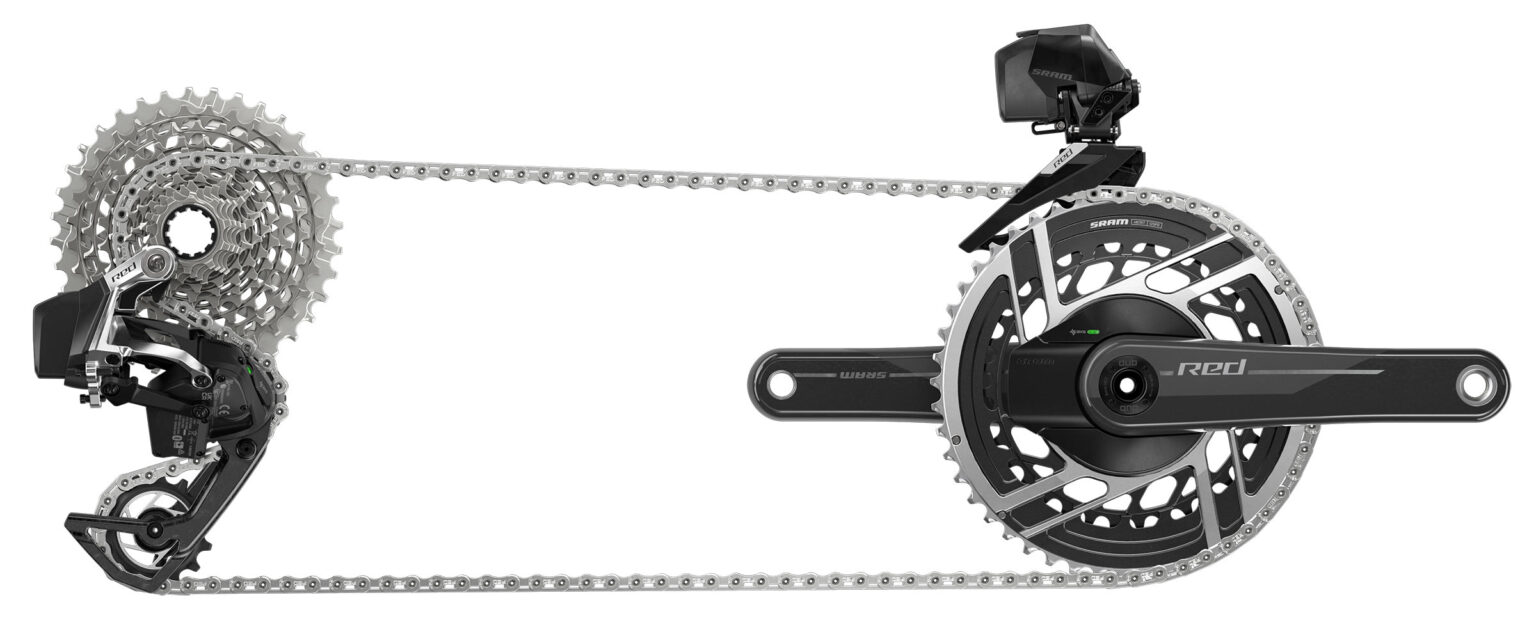
The original RED group was the lightest road group ever. And now they’re reclaiming that title in the electronic era. Every component is lighter:
-83g from brake levers and calipers
-23g from crankarms
-29g from crankset as a whole
-13g from chain
-16g rear derailleur
That’s 153g lighter than the original RED eTap AXS. That group was 2,649g before, and now it’s 2,496g with a power meter.
So, what’s new exactly?
Besides the weight, SRAM made big aesthetic and functional changes across almost every part. Here’s what’s changed for each component…
Controls & Brakes
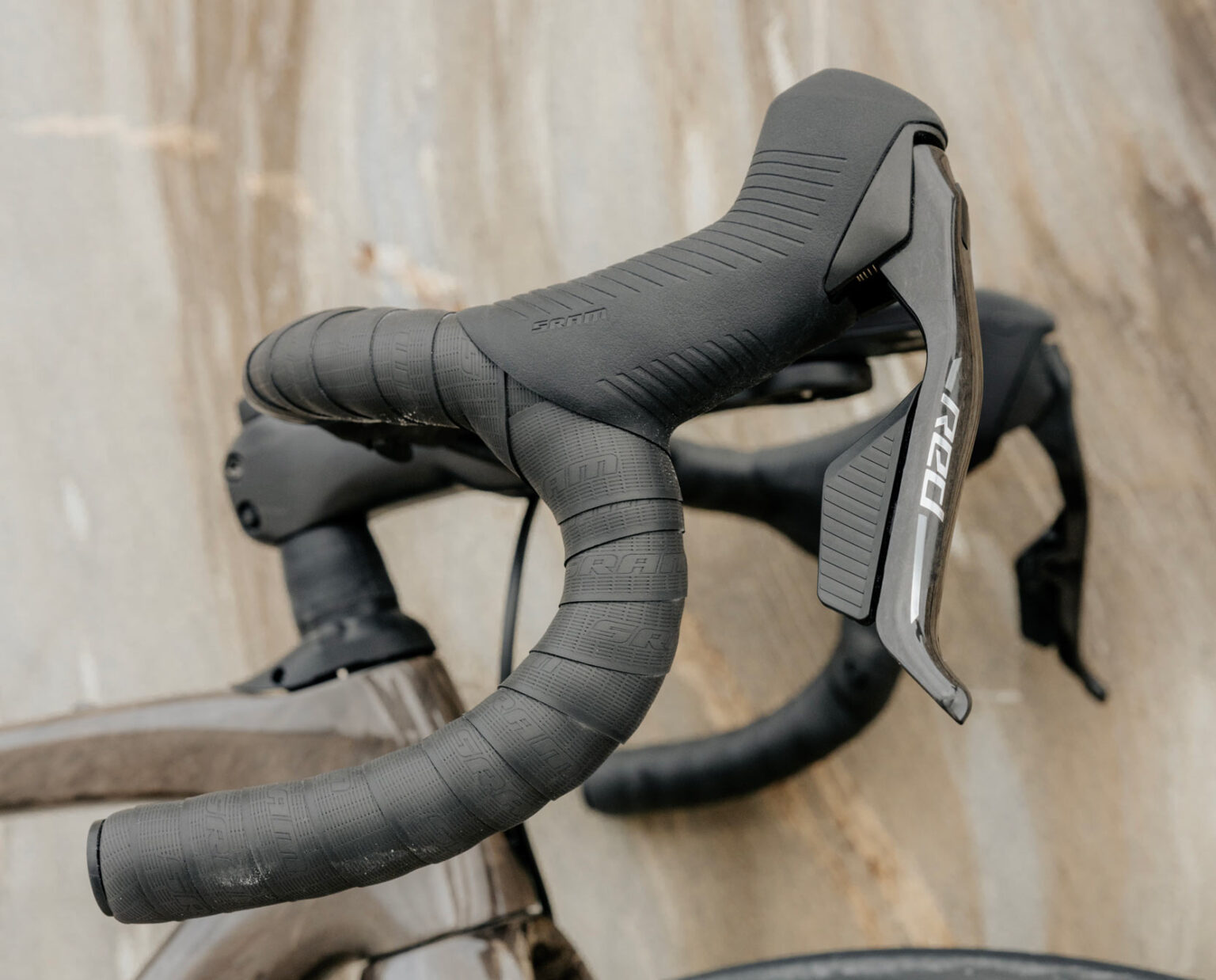
RED gets more comfortable hoods with a slimmer surface and smaller diameter. But these are all-new designs, not a rebadged version of what came with Rival and Force. They say it provides a better grip and results in less hand fatigue.
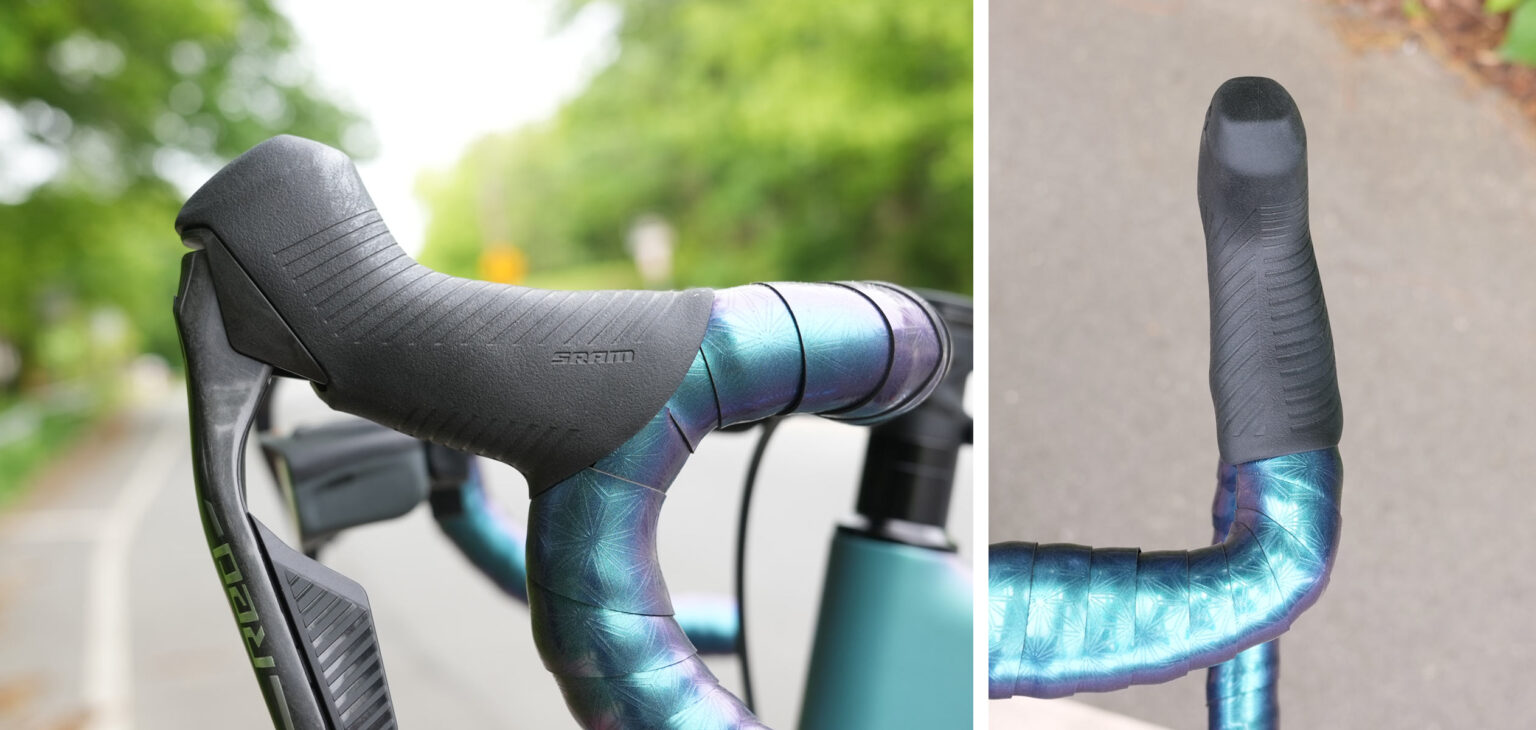
Textures and grooves on the sides and top of the hoods help with alignment and initial setup. Point the top ones forward and get the side ones level and you’re off to a good start, then fine tune as you wish.
Brake lever reach adjustment is accessed directly from the front of the lever by removing a small plug. The plug has a leash so you won’t lose it, too. If you’ve ever had to adjust your lever’s reach, you’ll appreciate just how big of an improvement this is.
A separate pad contact adjustment is on the side of the hoods, accessible by peeling back the cover.
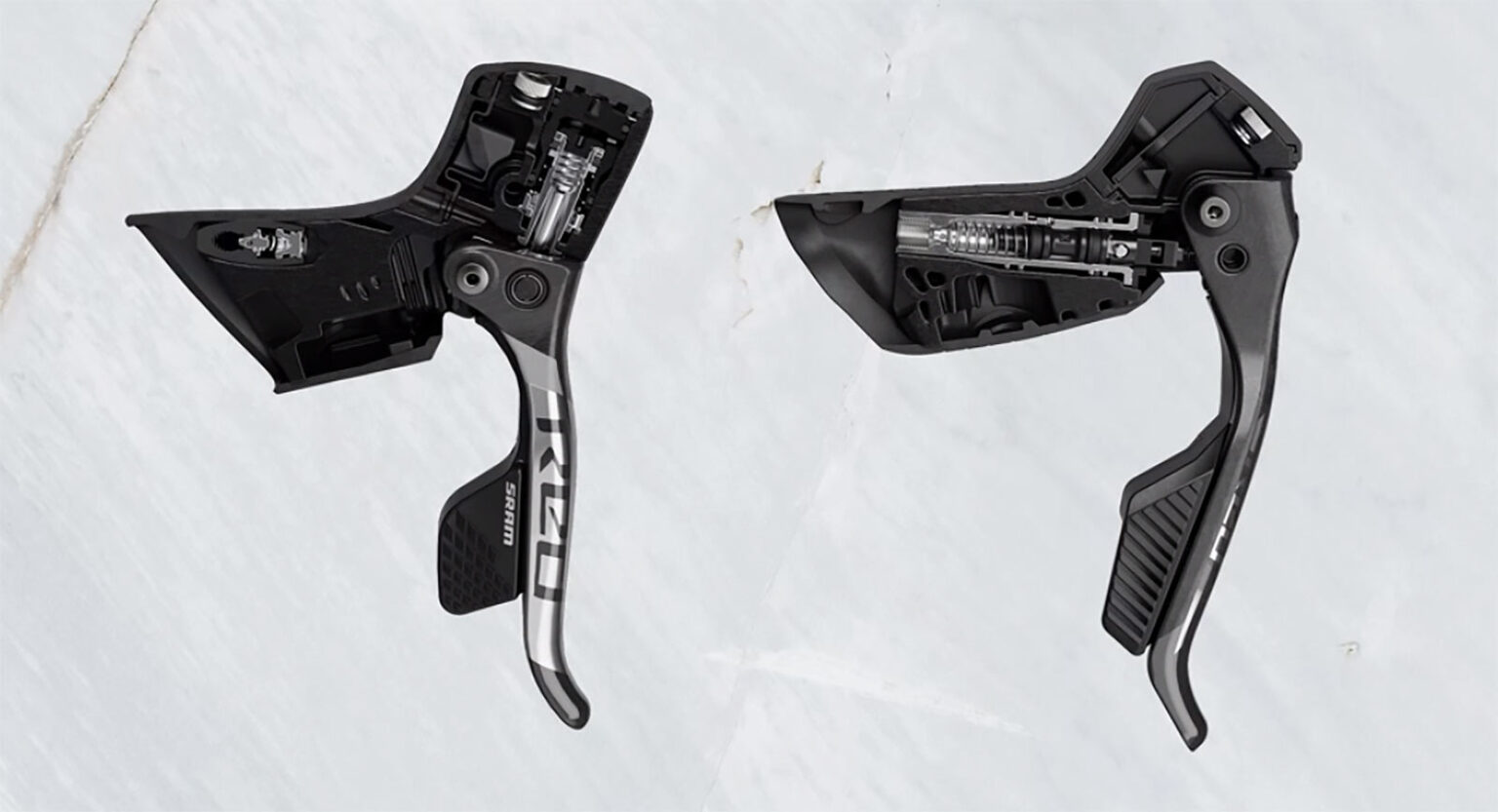
All that’s nice, but the biggest improvement comes from the redesigned brake levers themselves. Compared to the original eTap model, the new levers have a higher pivot point that’s also farther forward. They say it requires an incredible 80% less effort when braking from hoods, and 33% less effort when braking from the drops.
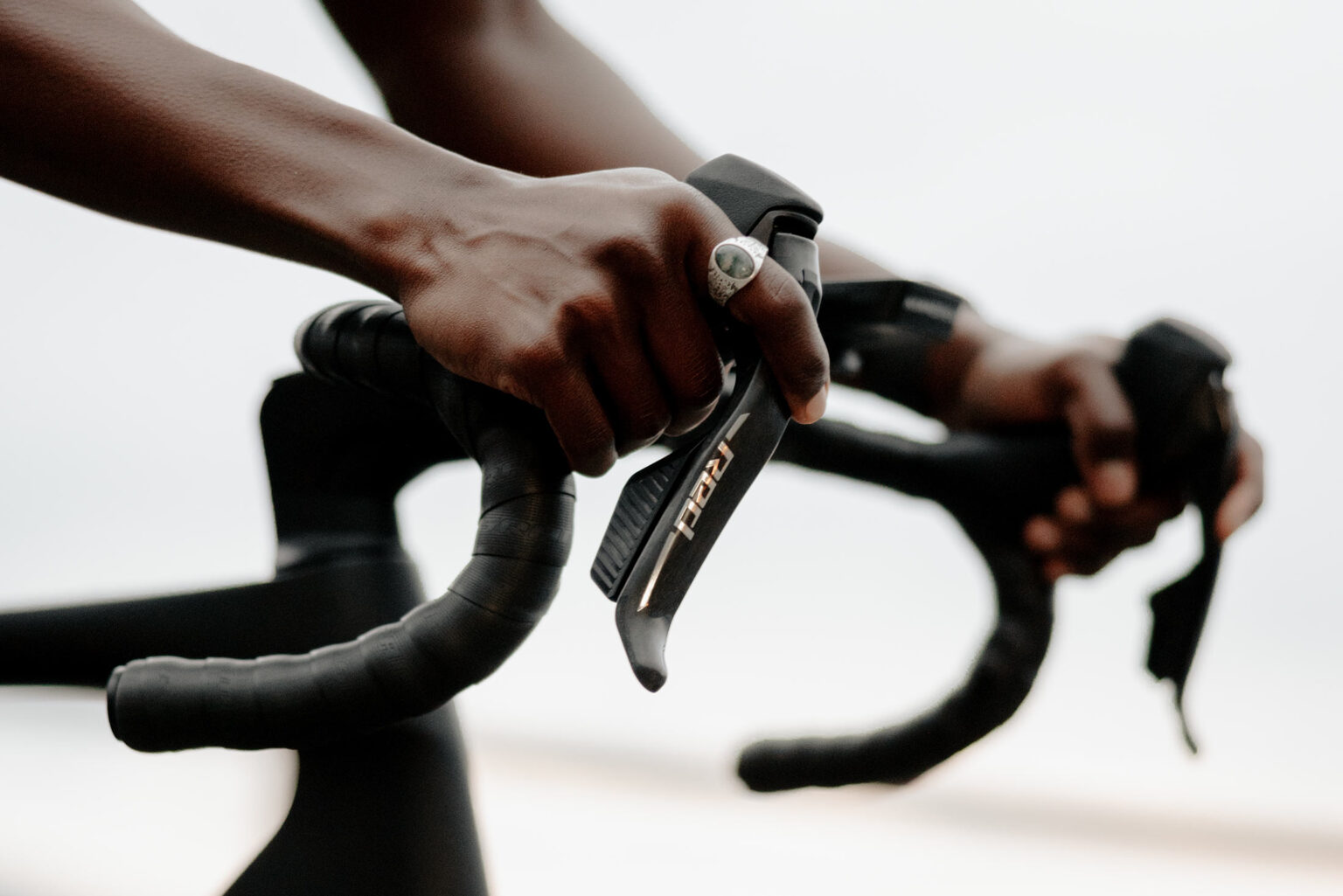
In real world terms, it means you can truly one-finger brake from the hoods.
It also switches to a “push piston” design, similar to how mountain bike brakes work, which simplifies the internals. Not only does this mean a more direct hose installation without requiring a second wrench, it also works with the new lever pivot placement to give you more leverage and lower force for a very light feel.
Those changes also shed a lot of weight, which SRAM says results in a noticeably lighter “swing weight” when you’re flicking the handlebar around while standing and climbing.
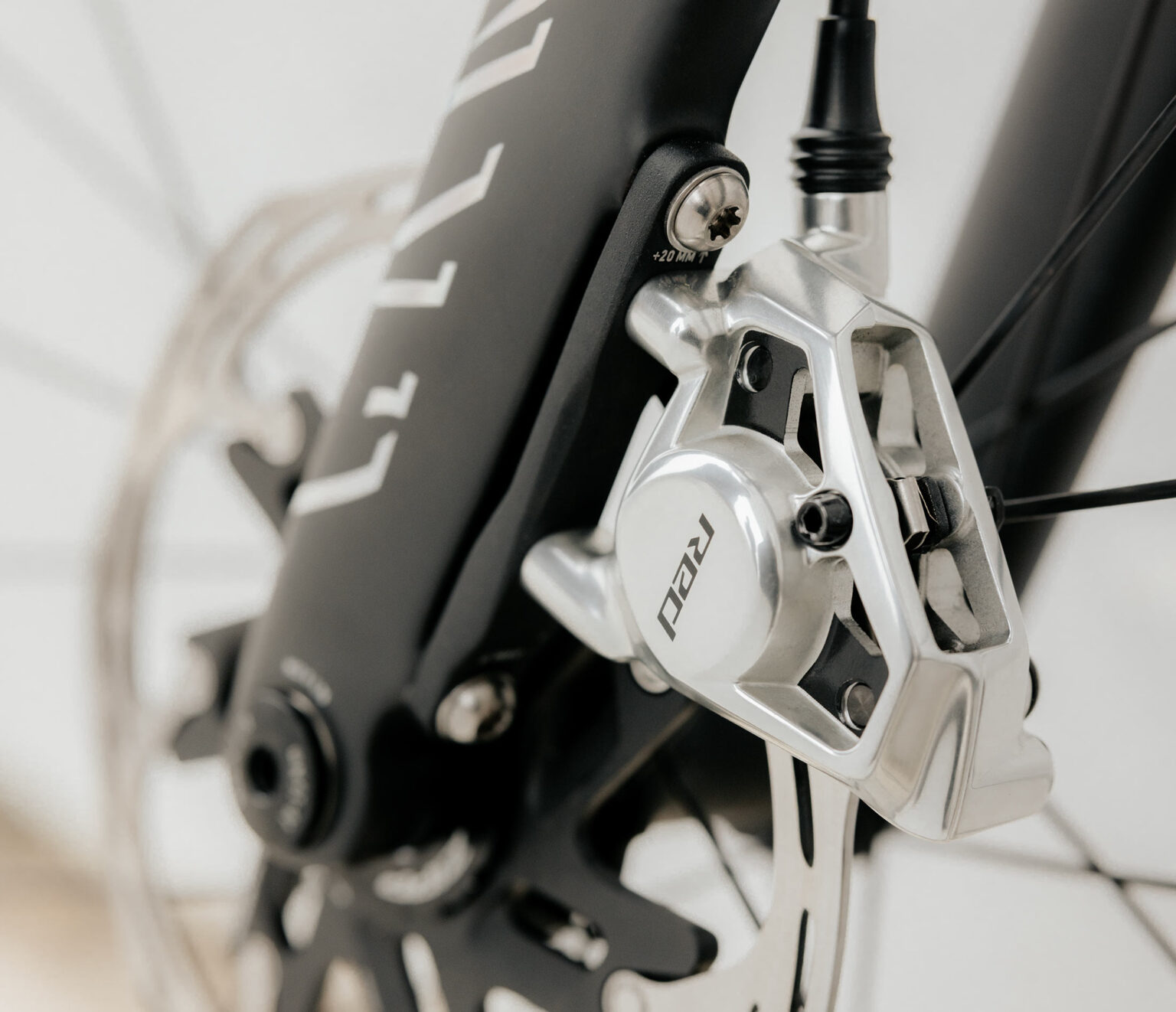
Those levers work a new, stiffer two-piece caliper with a lot of cut-outs and wide open pad slot. This gives it plenty of airflow and minimal weight, and plenty of pad clearance for rub-free performance.
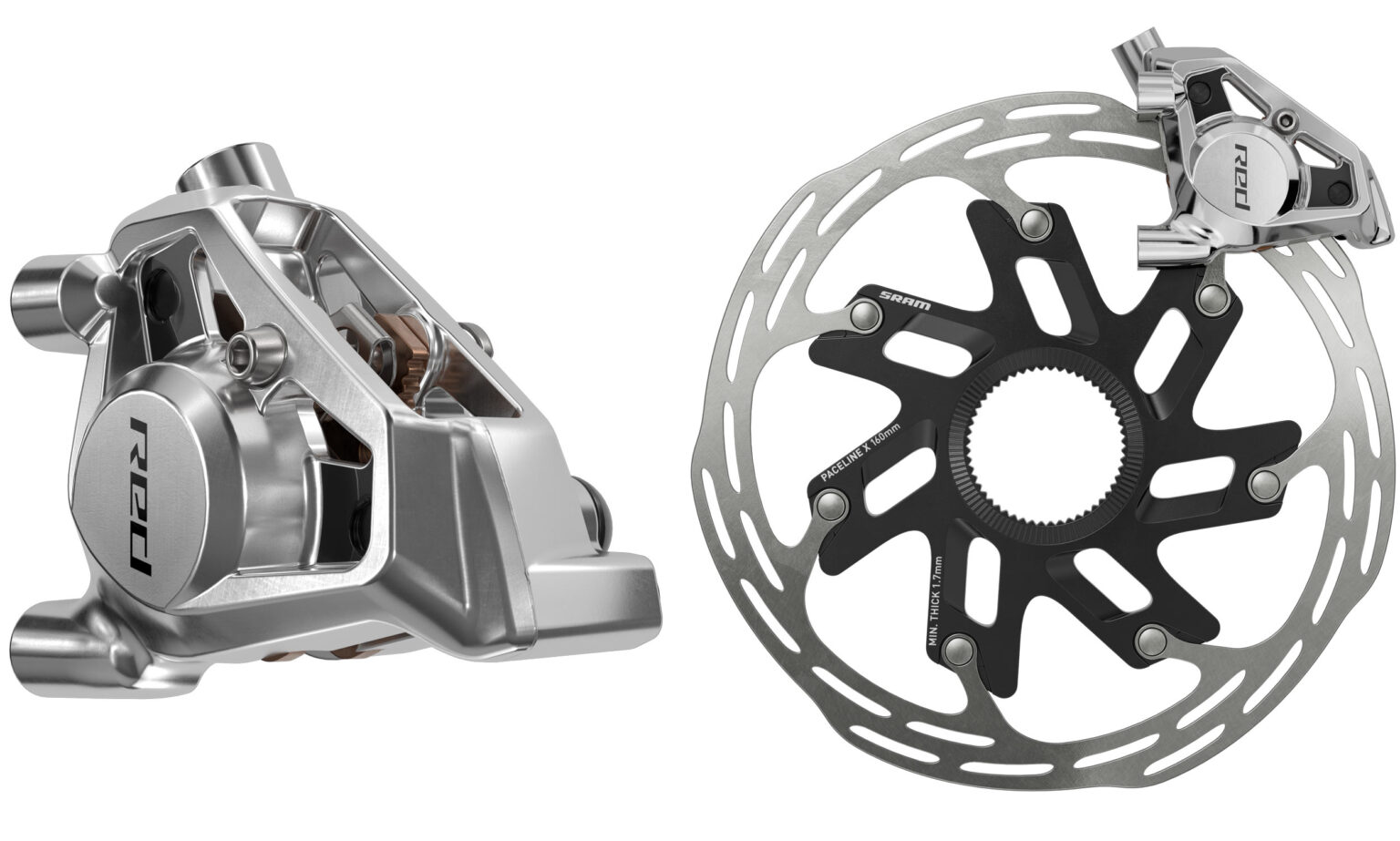
New Paceline X rotors have a new, lighter center carrier and will come in 140 & 160 sizes, Center Lock only.
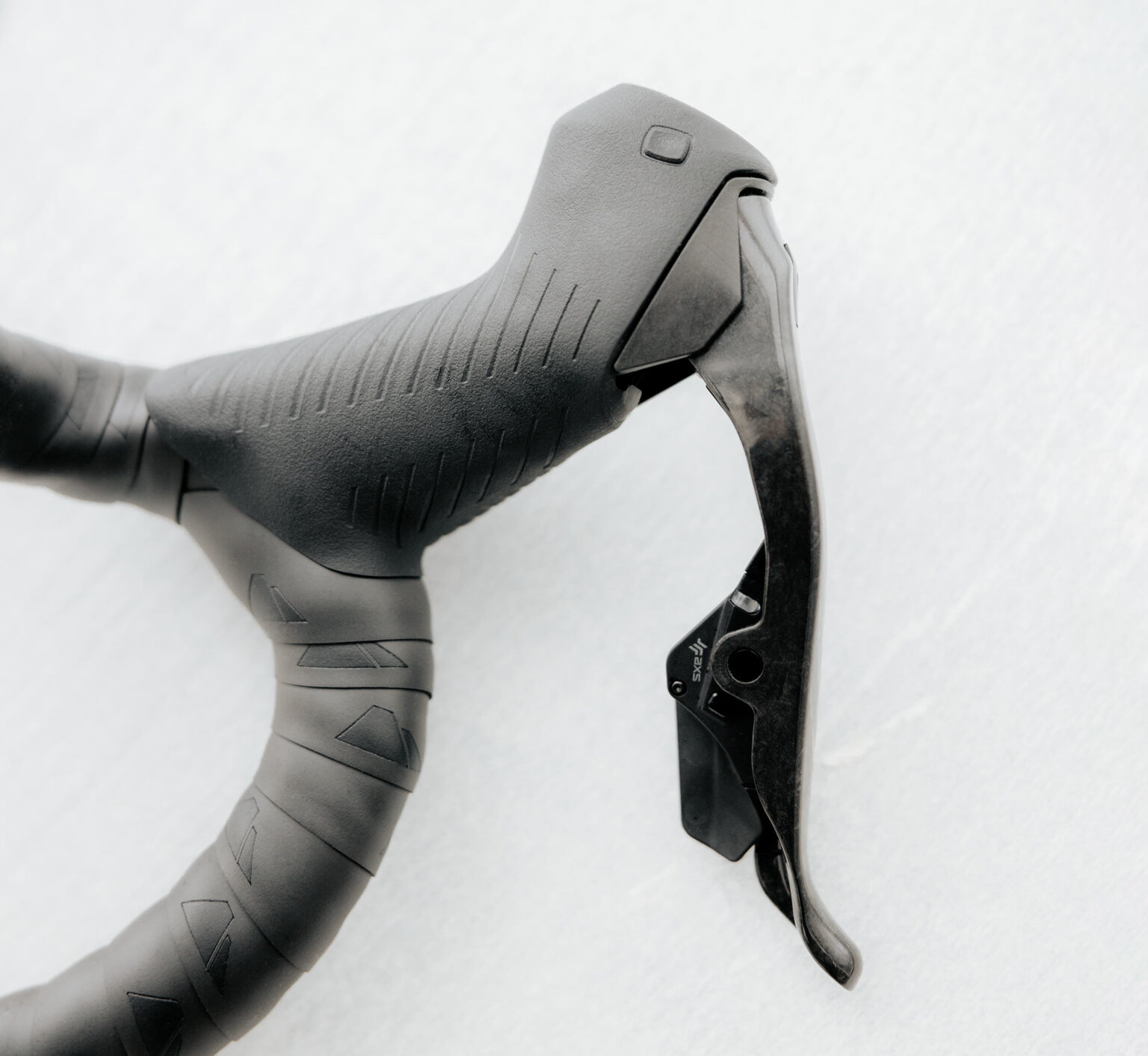
Back to the controls – A new bonus button on the inside of both hoods comes out of the box mimicking the shifter paddle on that same side. But, you can customize its function to reverse the shifting or have it control compatible ANT+ devices paired with the group. Set it up with the AXS App, or with the new Karoo (more on that below).
Cranks, Chainrings & Powermeters
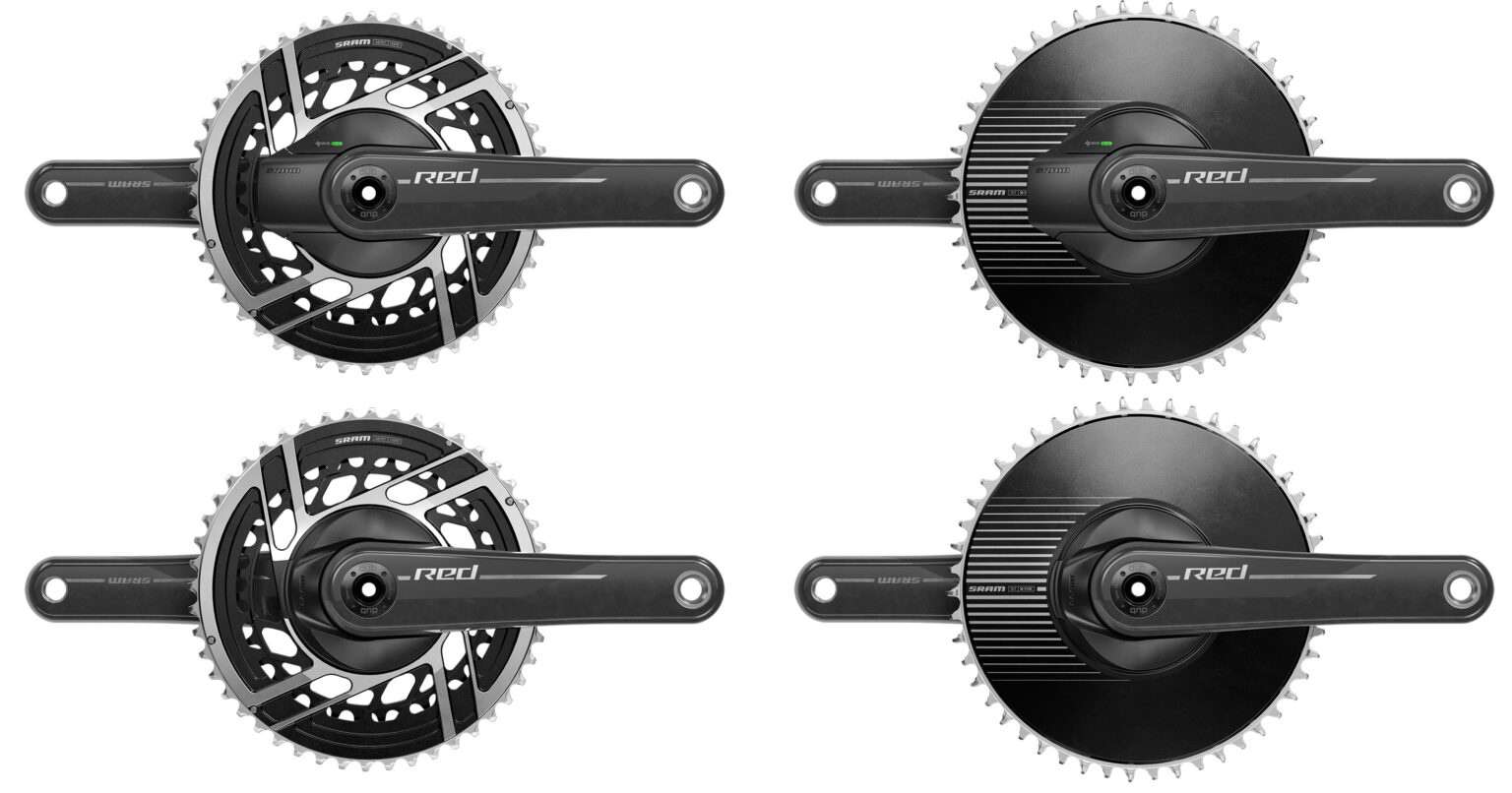
The crank arms have a refined hollow carbon fiber layup that’s 29g lighter than before. They come in 160 (new), 165, 167.5, 170, 172.5, and 175mm lengths.
The one-piece 2x chainring combos have a little more material machined away at the top and bottom edges (90º from the crankarms). They’re available in 50/37, 48/35, and 46/33 when buying a complete crankset, plus bigger 52/39, 54/41, and 56/43 combos for the aftermarket.
The 1x aero chainring gets new graphics but is otherwise the same. It comes only in 50T size when purchased with the crankset, but smaller sizes are available aftermarket. All 2x chainring combos and the 50T 1x are available with or without a Quarq power meter, which carries over unchanged. All attach with SRAM’s 8-bolt mounting pattern.
Front Derailleur
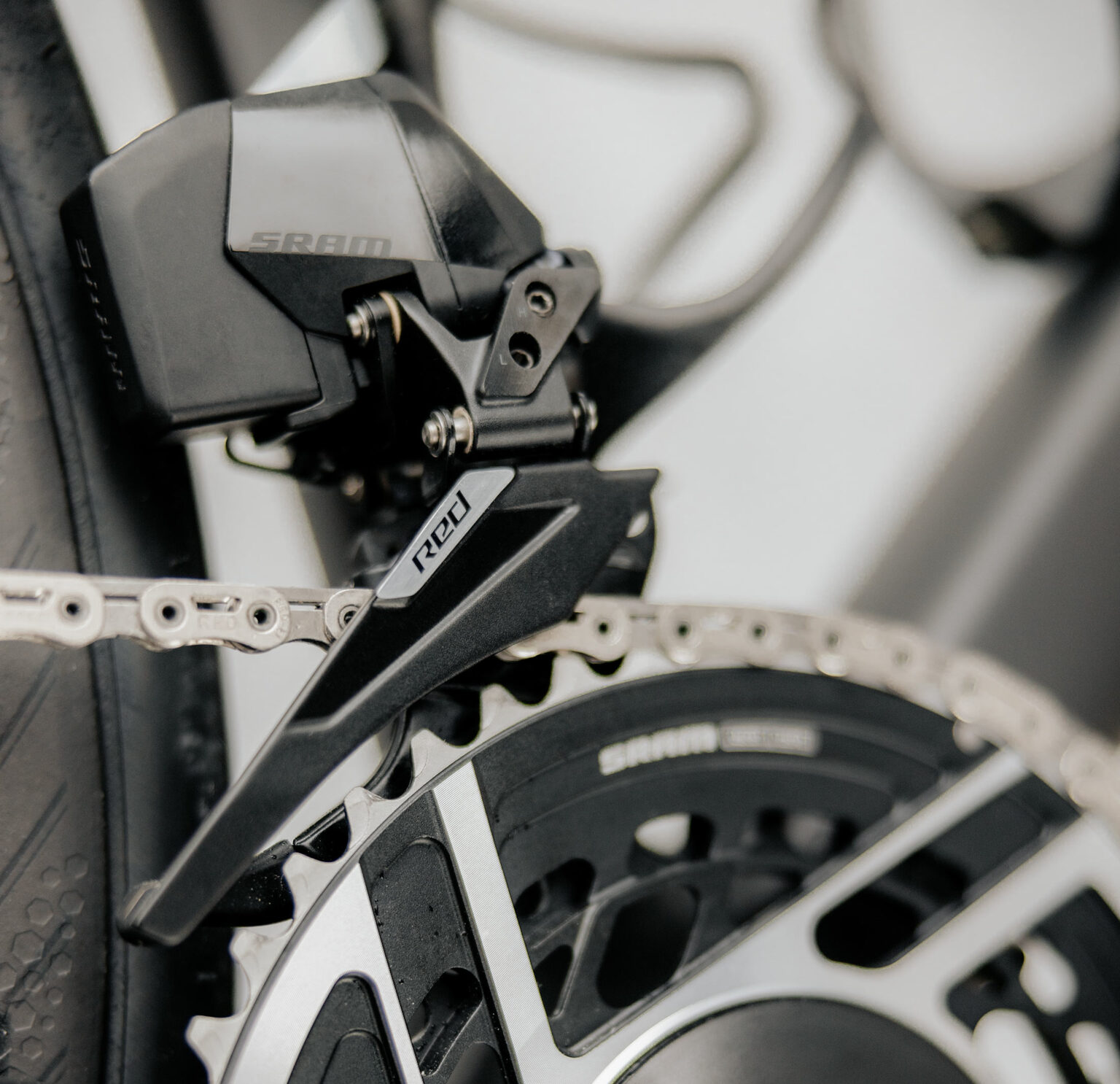
The new front derailleur has a narrower front cage, which means less distance to move for faster and more precise shifts. They can get away with this without chain rub for two reasons. First, the new RED is only available as a disc brake group, with no more rim brakes, so the cage is designed specifically for chain lines on disc brake bikes. Second, it has an improved auto trim to eliminate rasp on the extreme ends of the cassette, making its own slight adjustments as you shift across the rear gears.
It now comes with one support wedge pre-installed behind it, two others are included in the box. They’re now adjustable from a front-facing screw, too, which makes installation and adjustment much easier than before, even with the rear wheel still on the bike.
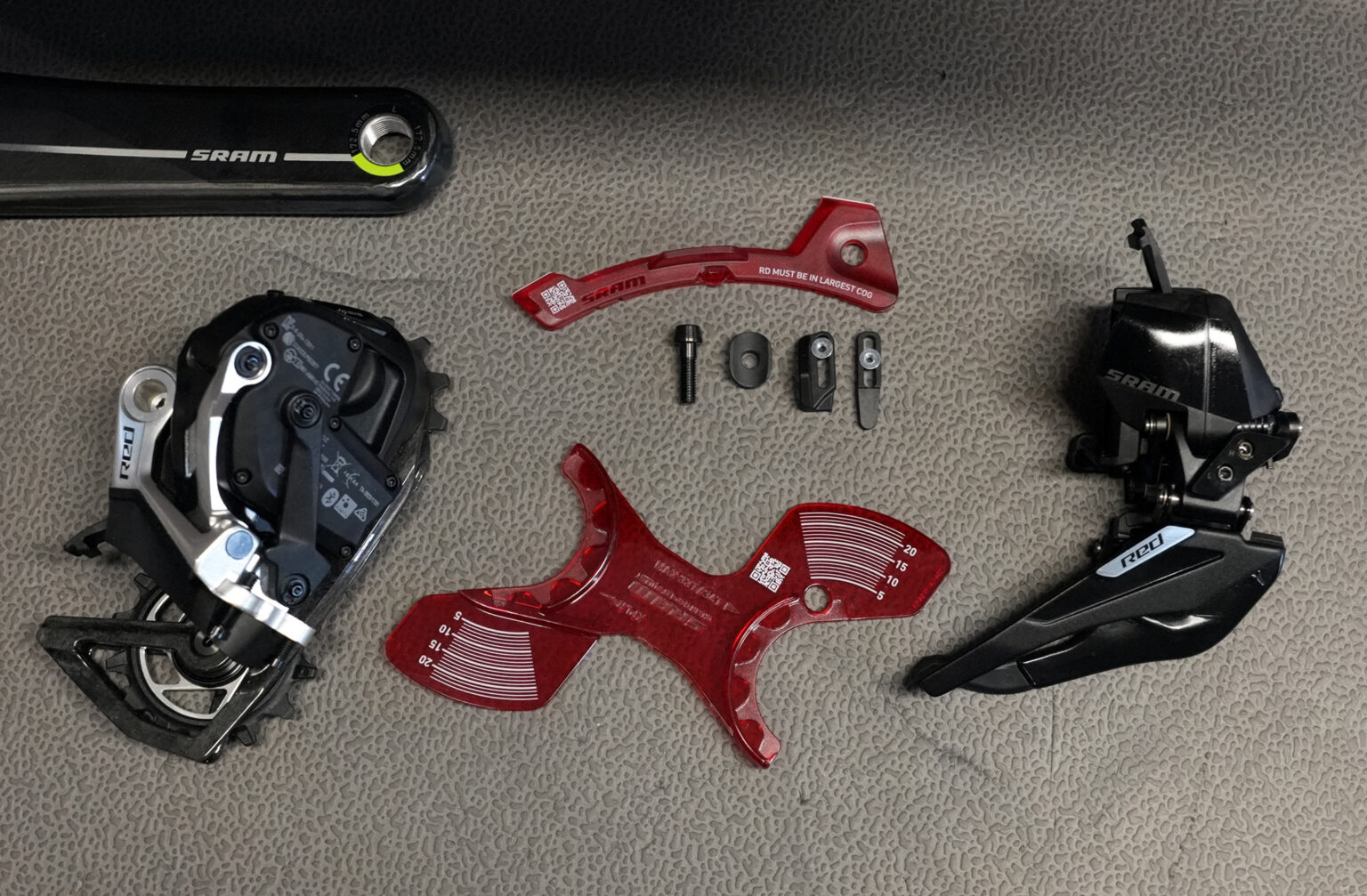
Both High and Low limit screws are now labeled, so you know what you’re doing. And it all comes with a new front derailleur setup guide tool that slides over the chainring. Lines on the top match up with the guide marks on top of the cage, which you line up with the big chainring, making it all very easy.
Two mounting holes on the front let you adjust its position on the bike to fit any of the six available chainring combos.
Rear Derailleur

The rear derailleur gets more material chiseled away for a 16g weight loss, but keeps their Orbit fluid damper for good chain management. The lower pulley is larger, both for aesthetics and marginal performance gains in terms of smoothness and reduced friction and noise, and gets ceramic bearings. No, it’s not a Magic Pulley like on their T-Type derailleurs.
It fits all of the new cassettes, from 10-28 up to 10-36. The only thing that’s not backward compatible about the entire group is that this won’t work with prior 10-26 cassettes.
SRAM RED chain

The new RED E1 chain is their lightest ever, dropping 13g by adding cutouts to both inner and outer plates. It keeps the hollow pins, which they say are stronger than their solid pins. It’s optimized for road, not MTB, even though it looks similar to the T-Type MTB chains.
It’s compatible with all other SRAM 12-speed road groups, but they don’t recommend it for MTB or e-bikes. The Rainbow “oil slick” finished chain and cassette are available aftermarket in all sizes.
But wait, there’s more…
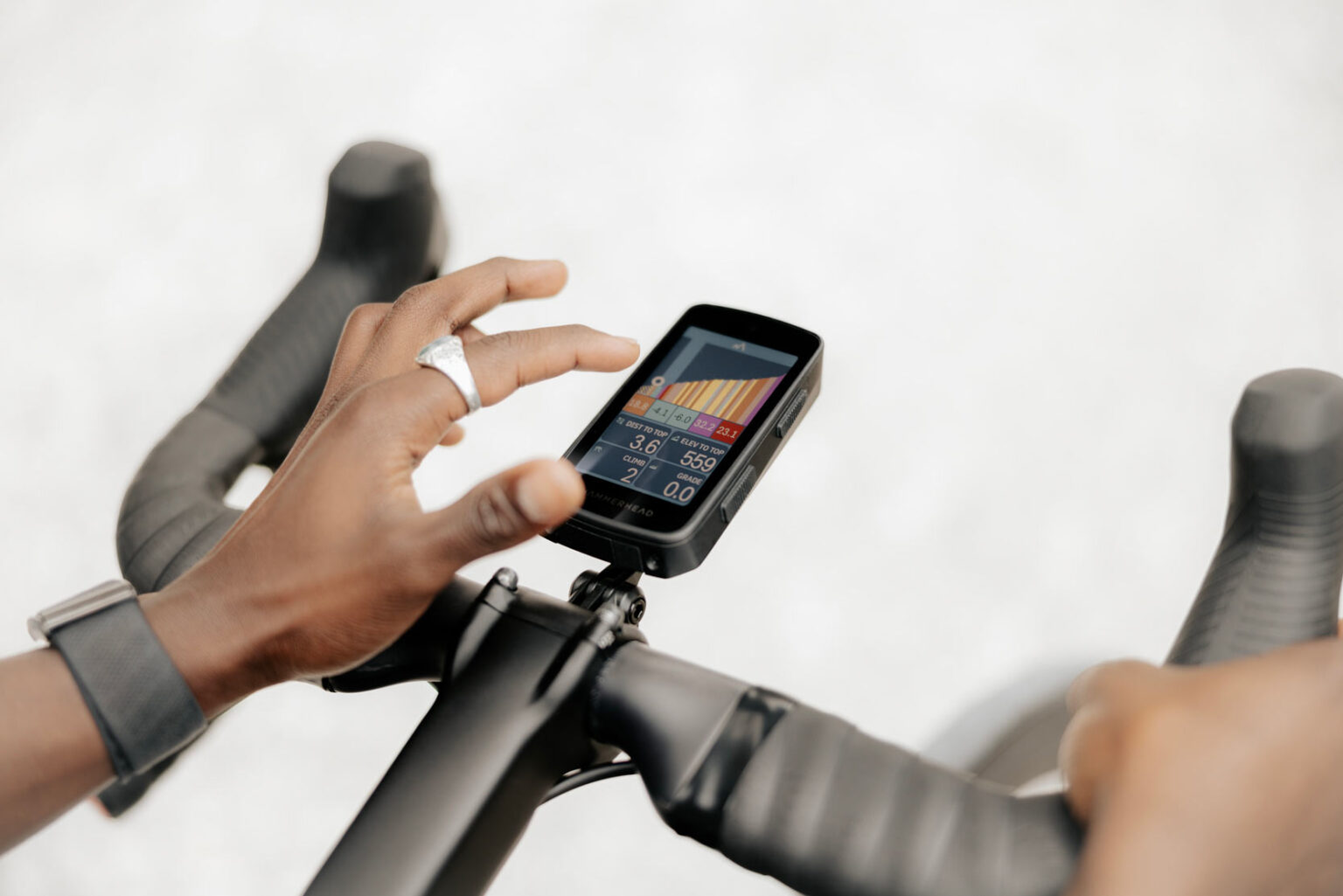
All groups have now dropped the “eTap” moniker, it’s just AXS now. This new SRAM RED AXS is the “E1” group, so if you’re ordering online, look for that designation in the part number.
There’s also a new Hammerhead Karoo GPS cycling computer that integrates with this group to offer easy on-bike, app-free customization.
You could set up your group with the AXS app. Or you can just turn on the all-new Hammerhead Karoo, which is included with all complete groupsets at launch. It was developed in conjunction with this RED group, and it’ll automatically connect and pair all devices. It also lets you configure the controls and show individual battery charge for each component.
SRAM RED AXS weights, pricing & availability
Complete SRAM RED AXS E1 groupsets are available at launch (now) with the new Karoo included. Individual components will be available in June and July for riders who want to upgrade individual parts.
Claimed weights
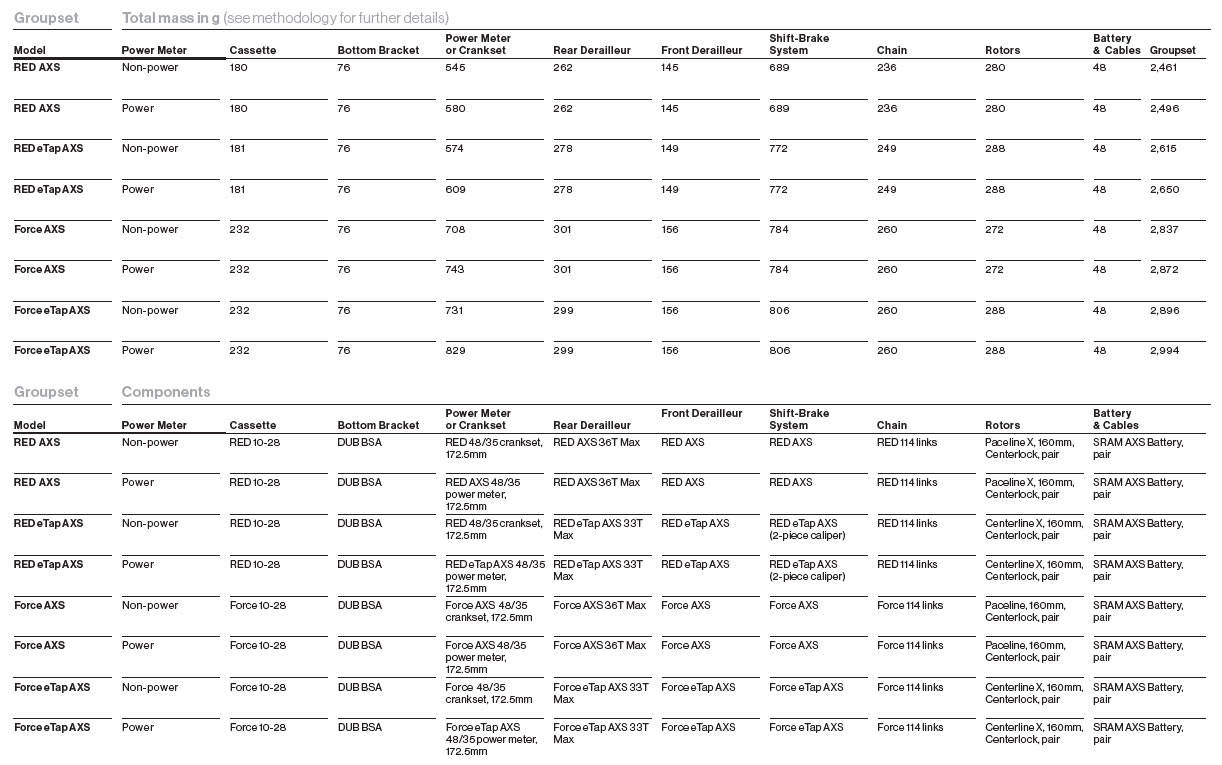
This chart compares weights for the new SRAM RED AXS with and without power meters to the original eTap version and the new and prior Force groups. The bottom section lists the specs for the parts weighed.
Pricing
A complete SRAM RED AXS E1 group, with Karoo, is $3,000 (€3,350 / £3,000). Individual component prices are:
- Cassette – Standard: $390
- Cassette – Rainbow: $410
- Chain – Standard: $89
- Chain – Rainbow: $99
- Quick Link Connector: $18
- Crankset w/ Standard Chainrings: $700
- Crankset w/ Power Meter Chainrings: $1,200
- Crankset w/o Chainrings: $400
- Chainrings w/ Power Meter: $800 (1x or 2x, all sizes)
- Chainrings – 2x Standard: $300
- Chainrings – 1x Standard: $135 – $240
- Shifter/Brake Levers w/ Caliper: $675 (per side)
- Paceline X rotors: $70
- Front Derailleur: $450
- Rear Derailleur: $700
- Hammerhead Karoo: $475
Stay tuned for first impressions with install notes and actual weights, and check out the new Karoo and new Zipp x Goodyear tires, too!
